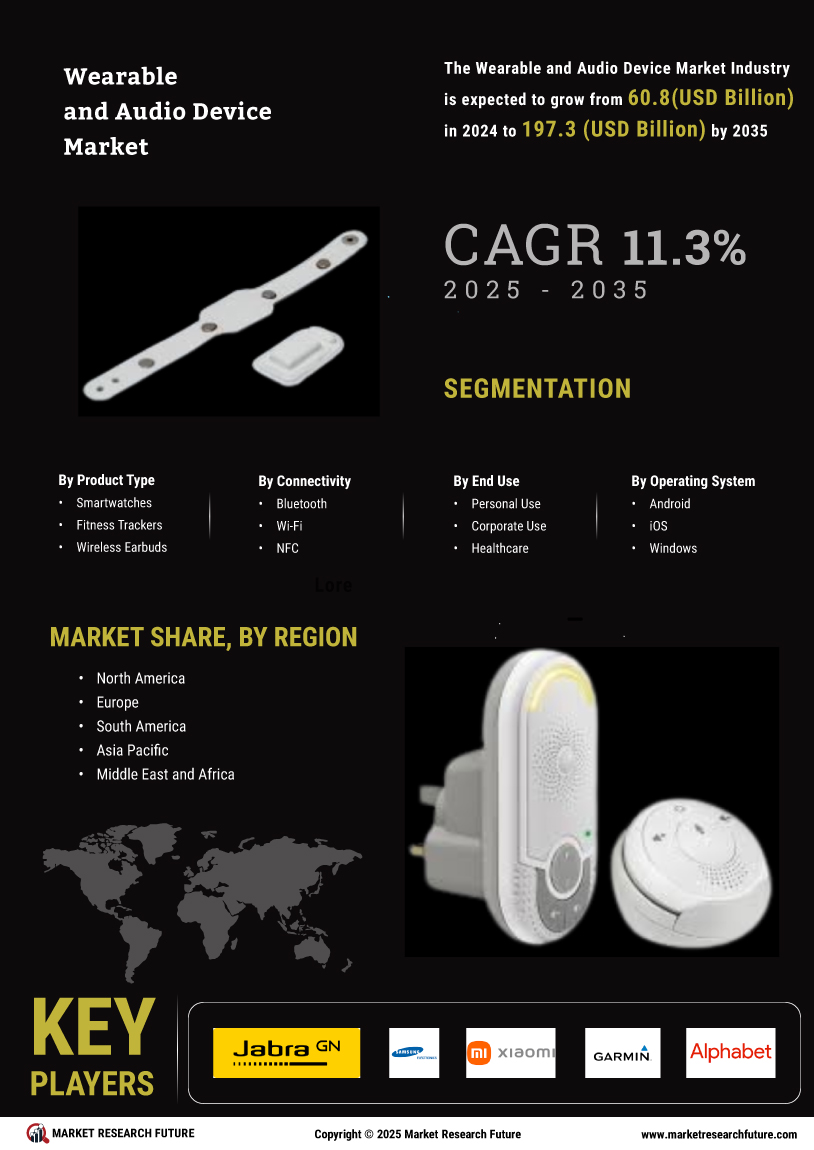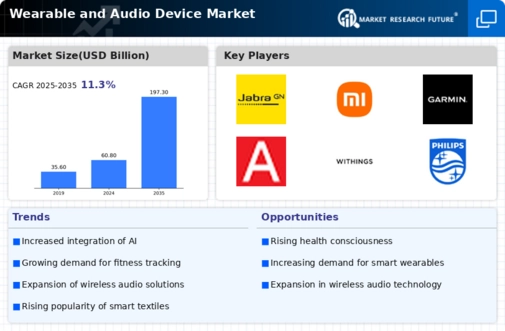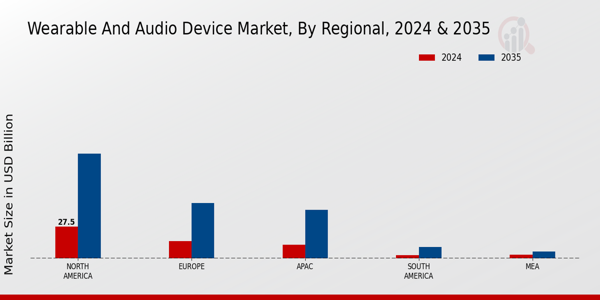Technological Advancements
Rapid technological advancements significantly influence the Global Wearable and Audio Device Market Industry. Innovations in sensor technology, battery life, and connectivity options enhance the functionality and appeal of wearable devices. For instance, the integration of artificial intelligence and machine learning enables personalized user experiences, making devices more intuitive and user-friendly. As these technologies evolve, they attract a broader consumer base, including those seeking advanced features in audio devices and wearables. The anticipated growth from 60.8 USD Billion in 2024 to 197.3 USD Billion by 2035 indicates a robust market trajectory fueled by continuous technological improvements.
Rising Health Consciousness
The increasing awareness of health and wellness among consumers drives the Global Wearable and Audio Device Market Industry. As individuals prioritize fitness and health monitoring, the demand for wearable devices such as fitness trackers and smartwatches surges. These devices offer features like heart rate monitoring, sleep tracking, and activity logging, appealing to health-conscious consumers. In 2024, the market is projected to reach 60.8 USD Billion, reflecting a growing trend towards personal health management. This shift not only enhances consumer engagement but also encourages manufacturers to innovate and expand their product lines, thereby contributing to the overall growth of the industry.
Integration of IoT and Smart Devices
The integration of Internet of Things (IoT) technology with wearable and audio devices propels the Global Wearable and Audio Device Market Industry forward. As smart homes and connected ecosystems become more prevalent, consumers seek devices that seamlessly interact with their other smart gadgets. Wearables that can communicate with home automation systems or audio devices that sync with smartphones enhance user convenience and experience. This interconnectedness not only drives sales but also fosters brand loyalty among consumers. The market's projected compound annual growth rate of 11.29% from 2025 to 2035 underscores the potential of IoT integration in expanding the industry.
Growing Demand for Wireless Audio Devices
The shift towards wireless audio devices is a prominent driver in the Global Wearable and Audio Device Market Industry. Consumers increasingly prefer wireless headphones and earbuds for their convenience and portability. This trend is bolstered by advancements in Bluetooth technology, which provide improved sound quality and connectivity. As more individuals engage in activities like commuting, exercising, or working from home, the demand for high-quality wireless audio solutions rises. This segment's growth contributes to the overall market expansion, with projections indicating a significant increase in revenue as consumer preferences evolve towards wireless solutions.
Focus on Personalization and Customization
The emphasis on personalization and customization in wearable and audio devices shapes the Global Wearable and Audio Device Market Industry. Consumers increasingly seek products that cater to their unique preferences and lifestyles. This trend manifests in customizable features, such as interchangeable bands for smartwatches or personalized sound profiles for audio devices. Companies that prioritize user-centric design and offer tailored experiences are likely to capture a larger market share. As the industry evolves, the ability to provide personalized solutions will become a key differentiator, driving growth and fostering consumer loyalty.

























Leave a Comment